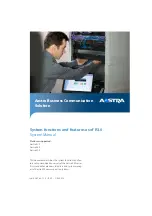
Action
1.
Be sure that no loose connections exist.
2.
If the power supplies have LEDs, be sure that they indicate that each power supply is working
properly:
a.
If the LEDs indicate an issue with a power supply (red, amber, or off), then check the power source.
b.
If the power source is working properly, then replace the power supply.
3.
Verify that the system has enough power, particularly if you recently added hardware, such as drives.
a.
Remove the newly added component and if the issue is no longer present, then additional power
supplies are required.
b.
Check the system information from the IML.
For product-specific information, see the server documentation on the Hewlett Packard Enterprise
website (
http://www.hpe.com/info/proliantgen10-docs
).
For more information, see the HPE Power Advisor on the Hewlett Packard Enterprise website (
4.
If running a redundant configuration, be sure that all the power supplies have the same spare part
number and are supported by the server.
For a list of supported power supplies, see the server QuickSpecs on the Hewlett Packard Enterprise
website (
).
5.
For further troubleshooting, see the Power-on issues flowchart.
More information
Power-on issues flowchart on page 38
Resolving loose connections on page 20
Insufficient power supply configuration
Symptom
The power supply configuration for the server is insufficient to meet the power requirements for the
server.
Cause
The current power supply configuration is not sufficient to operate the server.
Action
1.
Verify that the power supplies support the power requirements for the server configuration.
For more information, see the HPE Power Advisor on the Hewlett Packard Enterprise website (
2.
Verify that all power supplies are supported for this server.
3.
If the power supplies have LEDs, check the LEDs to see if they indicate an issue:
a.
If the LEDs display red, replace the power supply.
b.
If the LEDs display amber, then the power supply is in standby mode.
Insufficient power supply configuration
73















































